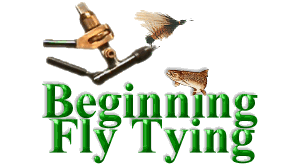|
The Montana Nymph is a stonefly nymph imitation. It's
easy to tie, and very productive in waters that have a good
stonefly population. Surprisingly, it's also very productive in
lakes and streams that don't have a good stonefly population.
If you substitute brown hackle, dark olive chenille for the body
and light olive chenille for the thorax, you have a great dragonfly
nymph imitation.

The tails of the Montana nymph are hackle tips from short
spade hackles found on the sides of necks. These hackles
are also used to supply fibers for dry fly tails.
The hackle wrapped around the thorax is usually neck hackle from a
lesser quality, soft hackle neck. Soft hackle "breathes" better than
stiff hackle providing a nice action similar to the movement of the legs
on a real nymph. Since that's what this hackle is supposed to imitate,
it makes sense to use soft hackle.
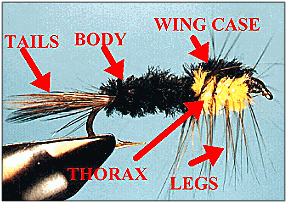
Materials List:
Hook: Nymph; Eagle Claw L063, Mustad 9671, Tiemco 5262, Daiichi
1710.
Tail: Two black, brown or olive hackle tips, usually from spade
hackles.
Body: Black, brown or olive chenille.
Wing case: Chenille, an extension of the body chenille.
Thorax: Yellow, orange or olive chenille.
Hackle: Black, brown or olive neck hackle. Soft hackle
is preferred.
Thread: 6/0 or 3/0, color to match body or black.
Tying steps:
1. Select two spade hackles for a tail and prepare them by stripping most
of the webbing and fluff from the stem, leaving them about the length of
the hook shank.
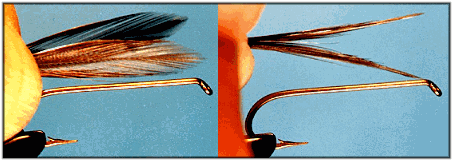
2. Arrange the hackle tips back to back, curvature away
from each other and tips even with each other.
3. Tie the tails to the hook, being careful to keep them on the sides of
the hook and the curvature facing away from each other. The tails should
be about 1/2 as long as the hook shank.
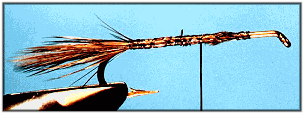
4. Wrap a chenille body just a hair longer than half the hook shank. Tie
the chenille off on top of the hook, but don't trim.
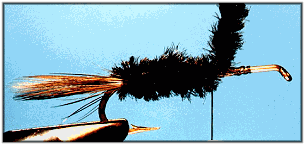
5. Fold the body chenille back over the body and tie in a prepared soft
neck hackle, curvature down, tight against the body.
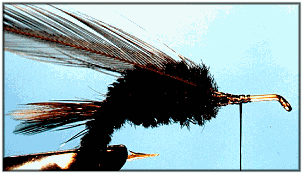
6. Tie in the chenille for the thorax tight against the body.
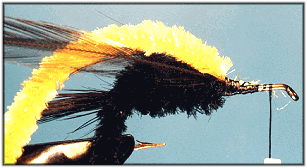
7. Wrap the thorax chenille forward, tie off behind the hook eye and
trim.
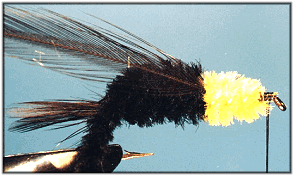
8. Wrap the hackle forward, keeping the curvature of the
barbules facing back.
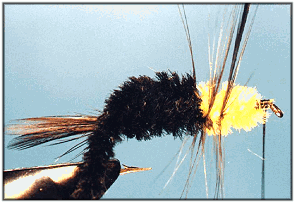
9. Grasp the body chenille you left hanging over the body and pull it
over the top of the thorax to form a wing case. Tie the wing case off
and trim.
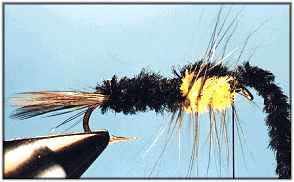
10. Whip finish and cement.

|
